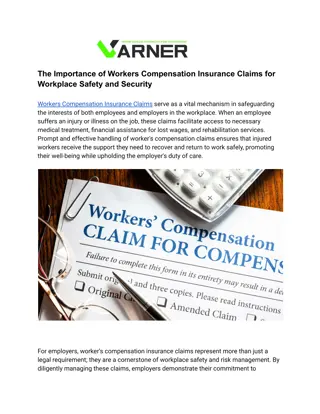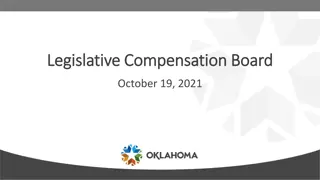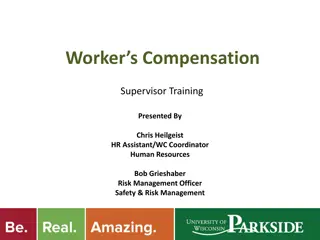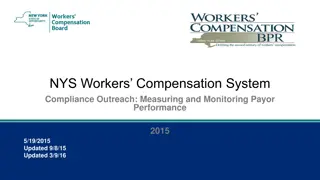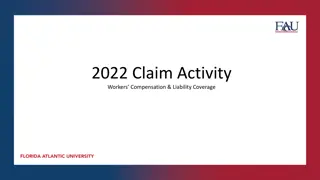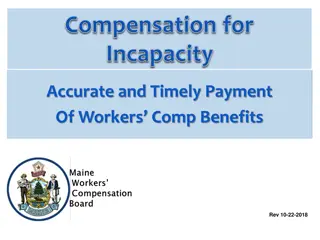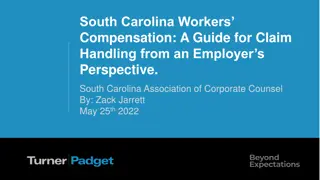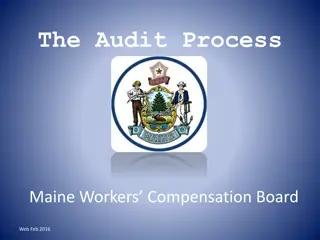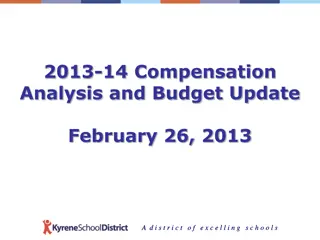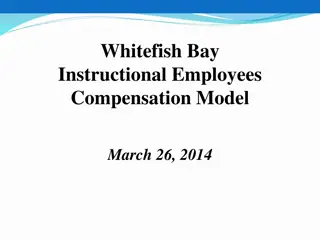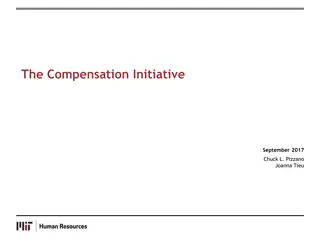Workers Compensation Board Scenarios Analysis
Explore scenarios involving workers from different industries to determine fair Average Weekly Wage (AWW) calculations. The cases highlight the challenges of defining AWW accurately based on various employment arrangements and earnings structures.
Download Presentation

Please find below an Image/Link to download the presentation.
The content on the website is provided AS IS for your information and personal use only. It may not be sold, licensed, or shared on other websites without obtaining consent from the author.If you encounter any issues during the download, it is possible that the publisher has removed the file from their server.
You are allowed to download the files provided on this website for personal or commercial use, subject to the condition that they are used lawfully. All files are the property of their respective owners.
The content on the website is provided AS IS for your information and personal use only. It may not be sold, licensed, or shared on other websites without obtaining consent from the author.
E N D
Presentation Transcript
AWW AWW Scenarios Scenarios Maine Workers Maine Workers Compensation Board Compensation Board ---------------------------------------------------------- ---------------------------------------------------------- Open Training Open Training Web Feb 2016
Scenario #1 - Arthur Arthur works for a road construction and paving company. He gats laid off in the winter months when it is too cold to pave roads, and returns in the spring. 102(4)(B) would result in an AWW of $1,163.27 ($43,040.88 divided by 37 weeks as weeks with no earnings would not be counted). Is this a fair and reasonable AWW? A possible alternative is to use 102(4)(D), and divide total earnings by 52 weeks, for an AWW of $827.71. You would need to obtain at least two comparables.
Scenario #2 - Duncan Duncan sells securities, and is paid a salary. He also receives sales incentive bonuses which are based on his sales volume and are paid twice a year, in June and December. He got a raise in his salary from $800 to $850 on 3/15/14, and another raise to $900 on 10/11/14. 102(4)(A) would result in an AWW of $900.00 (his salary at the time of the injury). Is this a fair and reasonable AWW? Probably not. A more fair and reasonable AWW might be to use 102(4)(B), dividing total earnings including bonuses of $56,500 by 52 weeks worked. This results in an AWW of $1,086.54.
Scenario #3 - Edson Edson is a commissioned salesman at a retail store. He is paid $11 per hour for time worked at the store plus a percentage of what he sells. The week ended 8/22/14, he worked only two hours and was out sick the rest of the week. He had no sick pay available. Using 102(4)(B), his earnings of $29,419 divided by 52 weeks worked results in an AWW of $565.75. In audit, we would allow you to treat that small week as a zero week, and calculate AWW based on the earnings of the remaining 51 weeks divided by 51. It is optional, and comparables need not be obtained.
Scenario #4 - Sarah Sarah works on the production line in a widget factory. Effective 8/16/14, she was promoted to production line manager at an increased hourly rate. Using 102(4)(B), her earnings of $32,296 divided by 52 weeks worked results in an AWW of $621.08. Is this a fair and reasonable AWW? Probably not. A more fair and reasonable method might be to take the earnings for the 12 weeks worked after her promotion divided by 12, for an AWW of $762.67. (Still enter all 52 weeks on the wage statement.)
Scenario #5 - Nicole Nicole works in an office as an analyst. Effective 8/16/14, she requested and received a demotion to a clerical position at decreased hours and a lower hourly rate. Using 102(4)(B), her earnings of $28,002 divided by 52 weeks worked results in an AWW of $538.50. Is this a fair and reasonable AWW? Probably not. A more fair and reasonable method might be to take the earnings for the 12 weeks worked after her change in position and rate divided by 12, for an AWW of $404.83.






